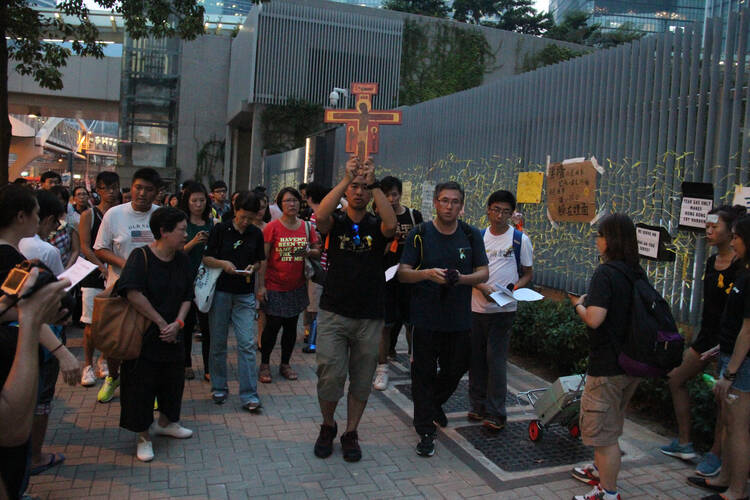Large-scale protests in Hong Kong, known as Occupy Central, reached a one-month milestone on Oct. 28. The continuing demonstrations are a response to moves by the Chinese government to limit civil participation in future Hong Kong elections. Thousands of protesters have remained in the streets focused on this single issue of electoral reform. But because this is the largest and most sustained protest in the Hong Kong Special Administrative Region’s 17-year history, observers, opponents and participants know there is more on the line than just universal suffrage for the city’s seven million people.
At the heart of Occupy Central are conflicting interpretations of the Basic Law, an ersatz constitution intended to govern Hong Kong for 50 years through its transition as a Special Administrative Region of China until its return to full Chinese sovereignty on July 1, 2047. The Basic Law guarantees Hong Kong a high degree of autonomy, including freedom of assembly, speech and religion.
Beijing may be more commonly associated in the Western mind with political protests because of the brutal suppression of the 1989 demonstrations in Tiananmen Square, but it is Hong Kong that has seen the most people consistently in the street in recent years. In 2003, as many as 700,000 people marched to protest the proposed enforcement of provisions of Article 23 of the Basic Law, which would have expanded police search-and-seizure practices.
But while the national security and now democratic process components of the Basic Law have been tested by protest, the agreement’s stipulations on freedom of religion have not. Even the cult Falun Dafa (better known to Westerners as Falun Gong), banned in 1999 by Beijing on the mainland, operates openly in Hong Kong.
Unlike the church in the rest of China, which is tightly supervised by the Chinese Communist Party, the Catholic Church in Hong Kong is still openly loyal to the Vatican, and its two Cardinals, Cardinal John Tong Hon and the retired Cardinal Joseph Zen Ze-kiun, S.D.B., were appointed by Rome. That relationship has not been interfered with or questioned since the handover, even though Cardinal Zen in particular has been an outspoken critic of the Chinese government.
The Catholic Church has been more evident in the protest than other churches. The Justice and Peace Commission of the Diocese of Hong Kong has been involved since the planning stage of Occupy Central, and Cardinal Zen has been a presence at the demonstrations themselves.
But playing too visible a role could ultimately be harmful to the protests and to the church. The Chinese government is quick to dismiss political demonstrations as the work of “foreign forces.” Too much prominence would reduce the focus on possible electoral reform and could also lead to pressure on Christian and other religious groups. With 21 world leaders, including President Obama, due in Beijing for the Asia Pacific Economic Cooperation Summit beginning Nov. 7, it is unclear whether China’s leadership will tolerate continuing protests in Hong Kong that might draw attention away from this marquee event.
While the Occupy Central movement may be about who answers to Beijing and who speaks for Hong Kong, members of the Hong Kong government and the protest leaders have more in common than they may care to acknowledge. The student protest organizer Joshua Wong is known to be a Christian, and, as The Wall Street Journal pointed out, so are some of Hong Kong’s Beijing-friendly leaders, “including number two official Carrie Lam and former Chief Executive Donald Tsang, who are Catholic.”
Although the protesters in Hong Kong have generated headlines around the world, the message has been slow to cross the S.A.R. border. State-run media are not covering the demonstrations, and the print media make only oblique references to what is happening in Hong Kong.
But thousands of Chinese visitors to Hong Kong during the Oct. 1 national holiday saw the protests in progress. Some were perturbed by the inconvenience and their inability to shop at some stores. But the protests continue, if for no other reason than to show that there may still be only one China, but there are also most certainly two systems.








